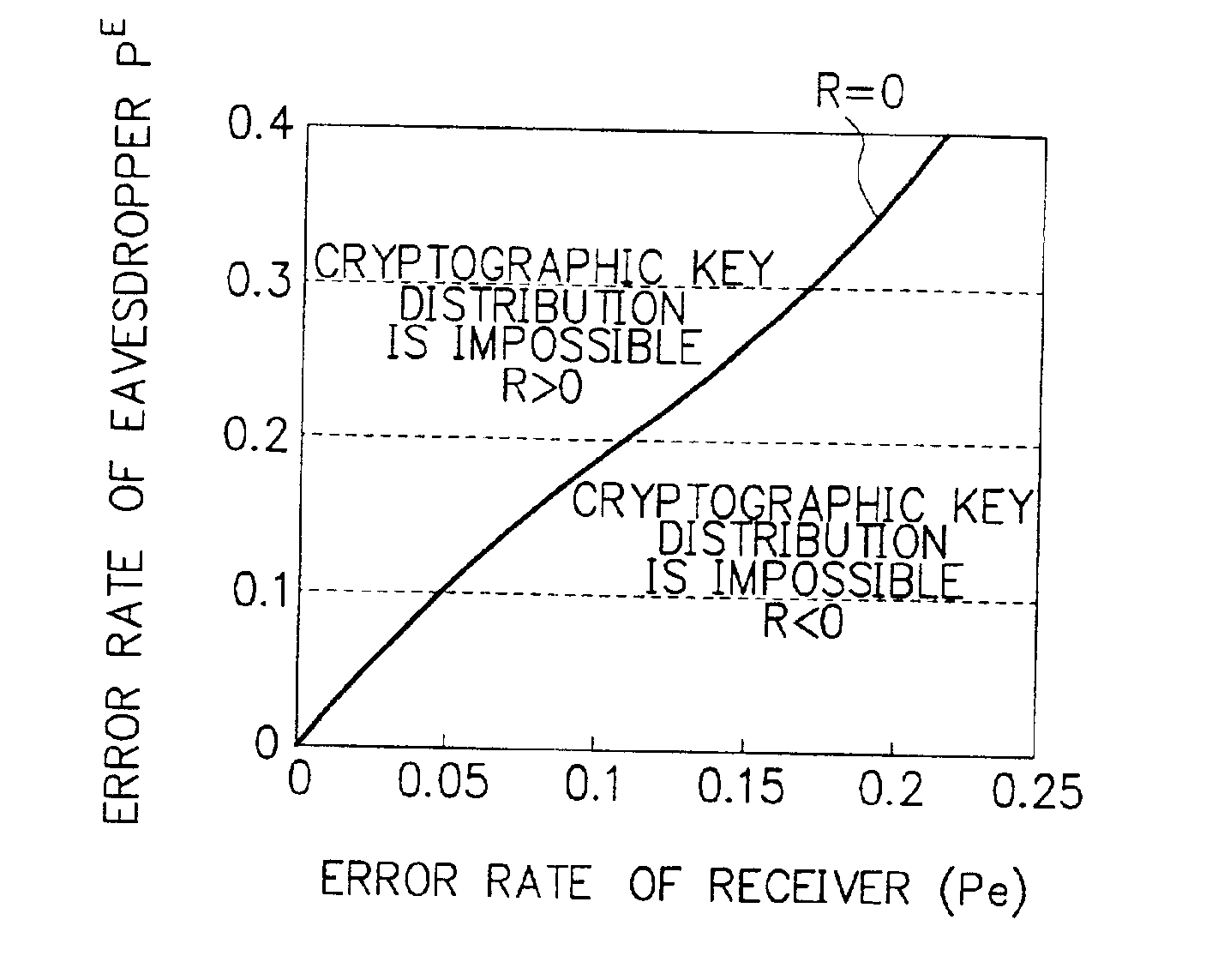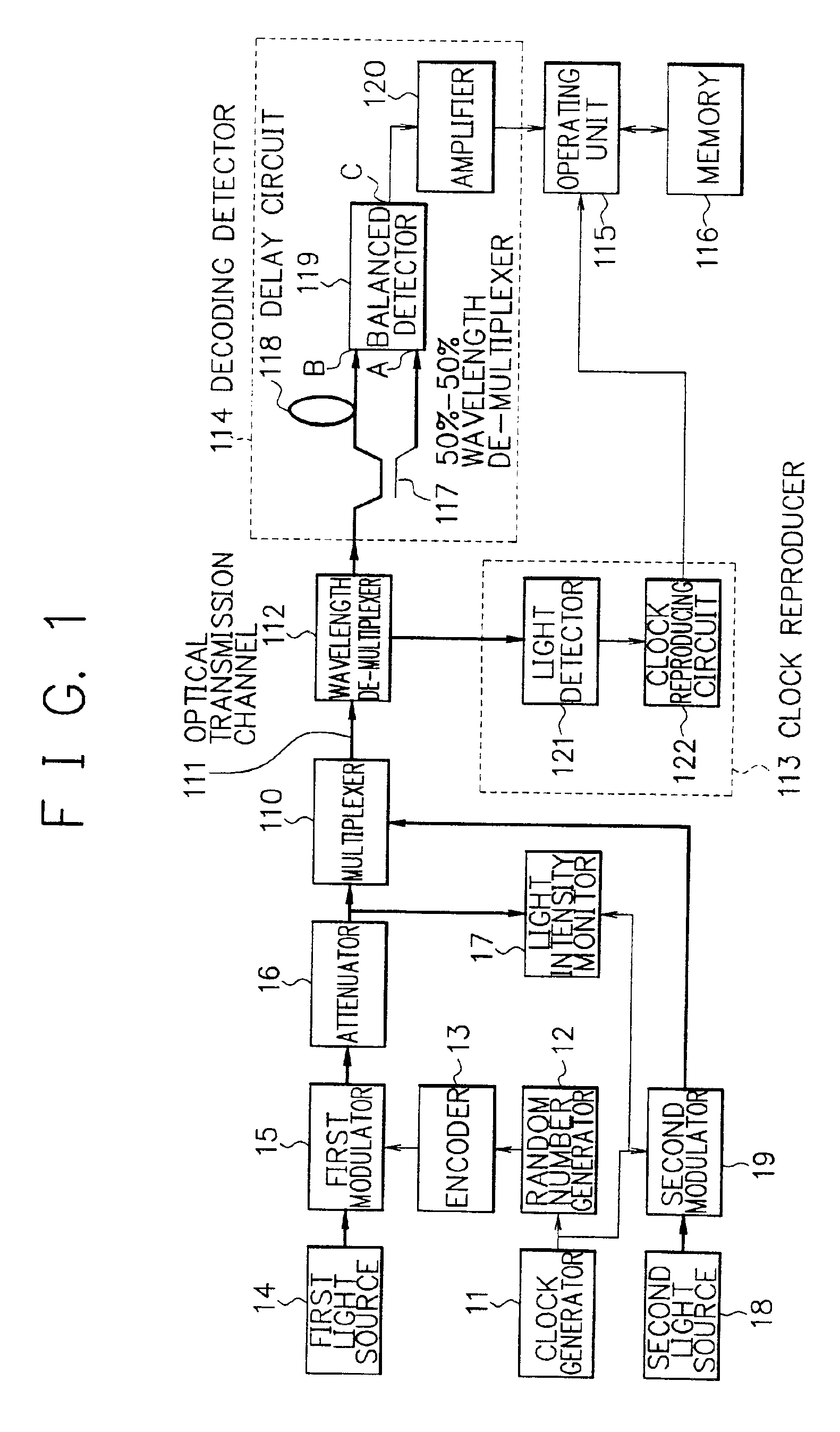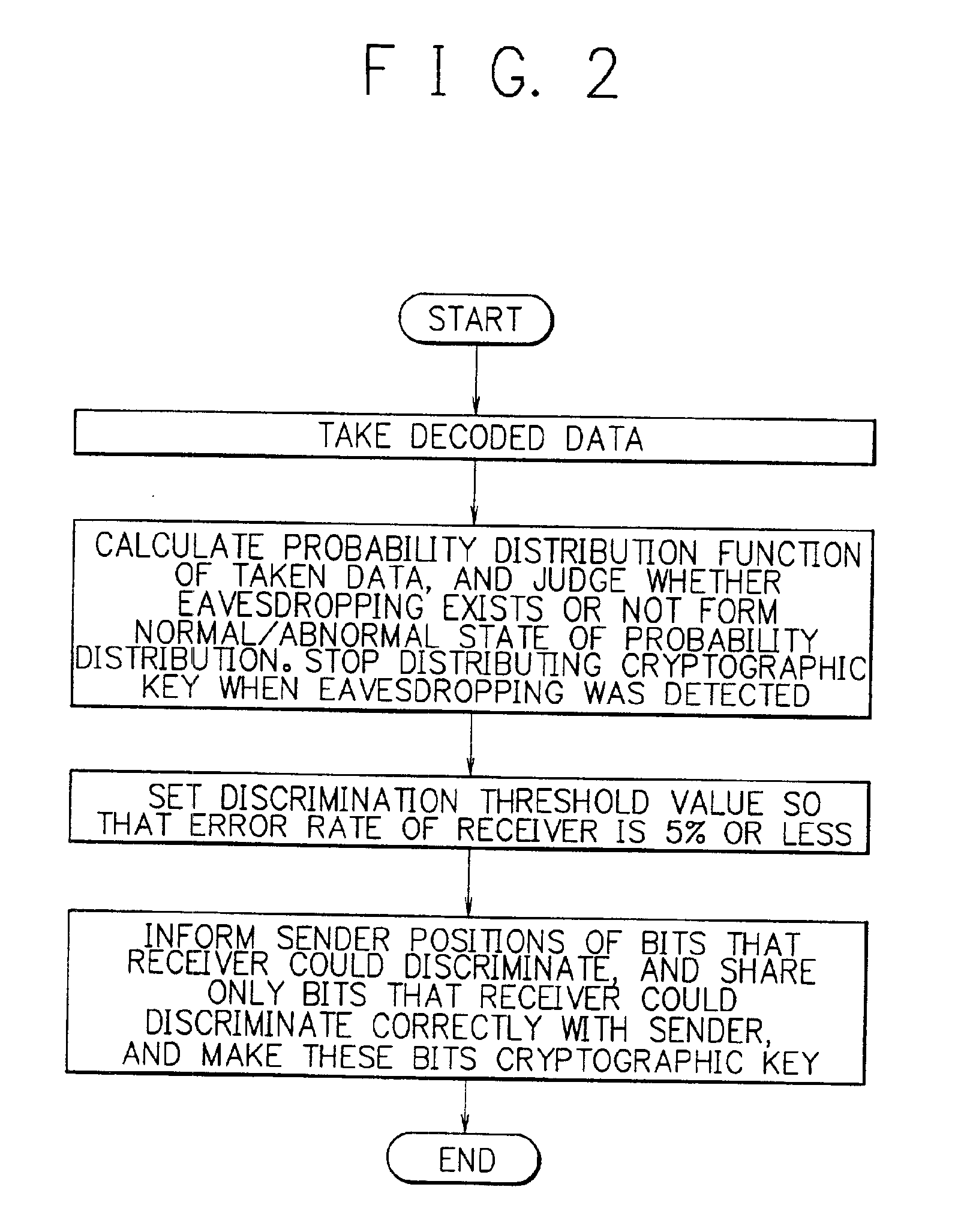Cryptographic key distribution method and apparatus thereof
a key distribution and key technology, applied in the direction of instruments, digital transmission, secret communication, etc., can solve the problems of low transmission efficiency, low quantum efficiency, and inability to transmit cryptography, and achieve high security, high security, and the effect of reducing the error rate of the receiver
- Summary
- Abstract
- Description
- Claims
- Application Information
AI Technical Summary
Benefits of technology
Problems solved by technology
Method used
Image
Examples
Embodiment Construction
[0027]Referring now to the drawings, embodiments of the present invention are explained in detail. FIG. 1 is a block diagram showing a structure of a cryptographic key distribution apparatus at an embodiment of the present invention. As shown in FIG. 1, the cryptographic key distribution apparatus at the embodiment of the present invention consists of a transmitting apparatus (sender) and a receiving apparatus (receiver), and the transmitting apparatus and the receiving apparatus are connected through an optical transmission channel.
[0028]The transmitting apparatus consists of a clock generator 11, a random number generator 12, an encoder 13, a first light source 14, a first modulator 15, an attenuator 16, a light intensity monitor 17, a second light source 18, a second modulator 19, and a multiplexer 110. And wavelengths of light generating by the first light source 14 and the second light source 18 are different.
[0029]The receiving apparatus consists of a wavelength de-multiplexer...
PUM
 Login to View More
Login to View More Abstract
Description
Claims
Application Information
 Login to View More
Login to View More - R&D
- Intellectual Property
- Life Sciences
- Materials
- Tech Scout
- Unparalleled Data Quality
- Higher Quality Content
- 60% Fewer Hallucinations
Browse by: Latest US Patents, China's latest patents, Technical Efficacy Thesaurus, Application Domain, Technology Topic, Popular Technical Reports.
© 2025 PatSnap. All rights reserved.Legal|Privacy policy|Modern Slavery Act Transparency Statement|Sitemap|About US| Contact US: help@patsnap.com



